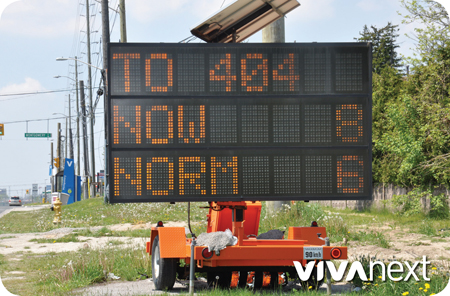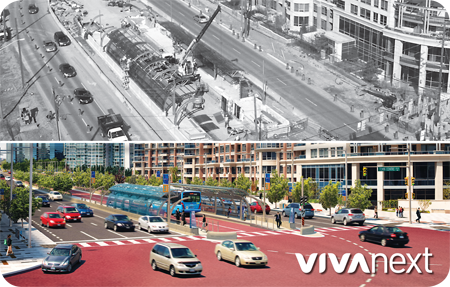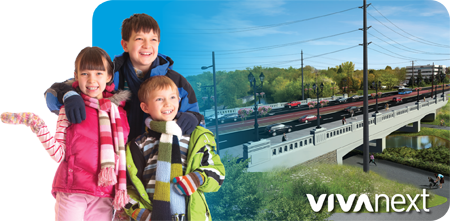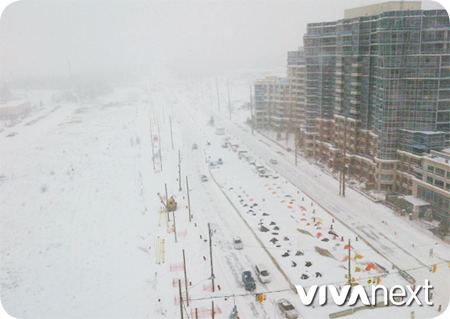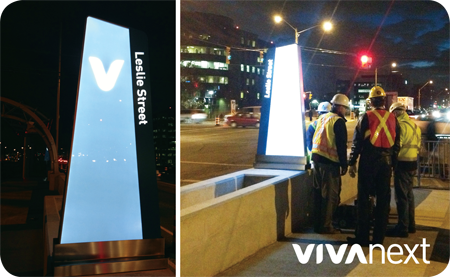
York Region is growing and vivaNext is the plan to bring the next generation of rapid transit to service that growth. Funding has been granted for several projects within the plan, including bus rapid transit [BRT], a subway, a bus maintenance facility and bus terminals. But where does that plan start? In general, it starts with vision, professional expertise, time, money and a commitment to stick to the plan.
But to be more specific, like all really important initiatives, the starting point for a successful transit program is doing in-depth planning to assess the Region’s population trends, long-term growth forecasts, transportation and development patterns, and economic development goals.
The overall need for rapid transit and the specific projects that together make up vivaNext were first identified in the Region’s Transportation Master Plan, then thoroughly evaluated through a series of Environmental Assessments.
Consultations with approval agencies, such as conservation authorities and local heritage committees, as well as the broader community, including employers, ratepayer groups and chambers of commerce, also provided important input.
This multi-year planning process has involved many levels of professional expertise within and affiliated with York Region and our local municipalities, and is proof of our communities’ long-range stewardship to meet our future needs.
Once the planning is complete then the work of building the transit network begins. Work that requires a logical and disciplined approach, to identify which pieces need to be built first, forming the network’s backbone, and which components can come later. Construction also has to be carefully staged, to minimize the disruption to communities, businesses and travelers.
That logical progression has informed how we’re staging the construction of vivaNext, with the added complexity of planning for the greatest amount of connectivity between our network and the larger GTA transit network as it expands.
Our overall priority is to improve the transit network at every step, so that we all can benefit right away from having more transit choices and a welcoming streetscape.
All currently funded segments will be completed by the end of 2018. But that won’t be the end – with vivaNext’s established success in delivering projects as planned, we hope to obtain new funding to complete the remaining segments of the network, including additional rapidway segments and the extension of the Yonge Subway to Highway 7.



